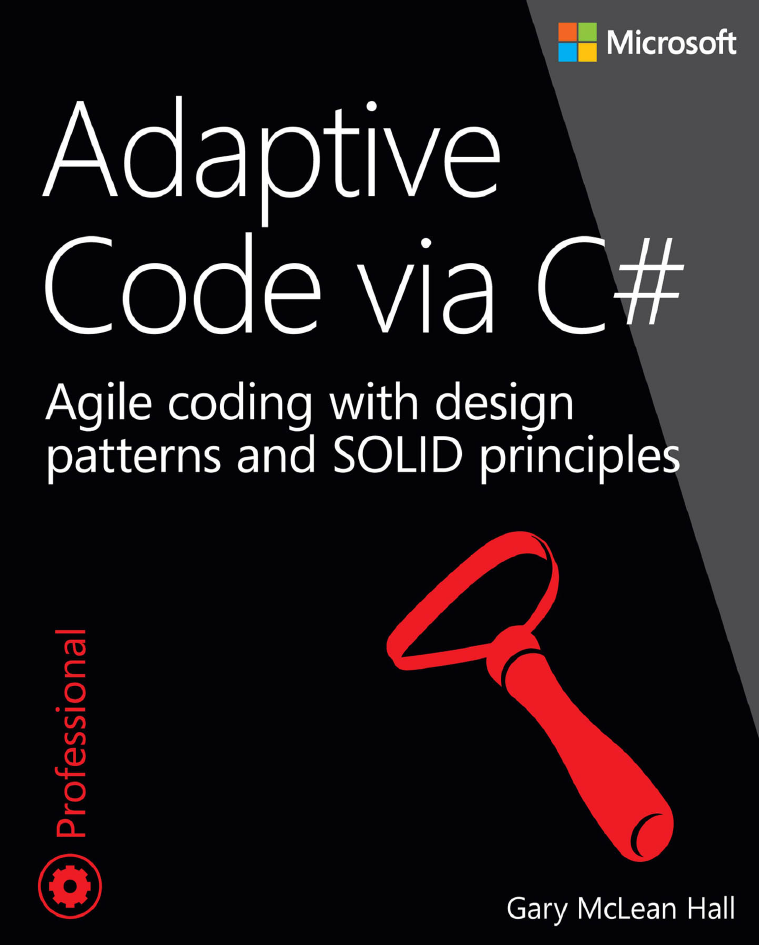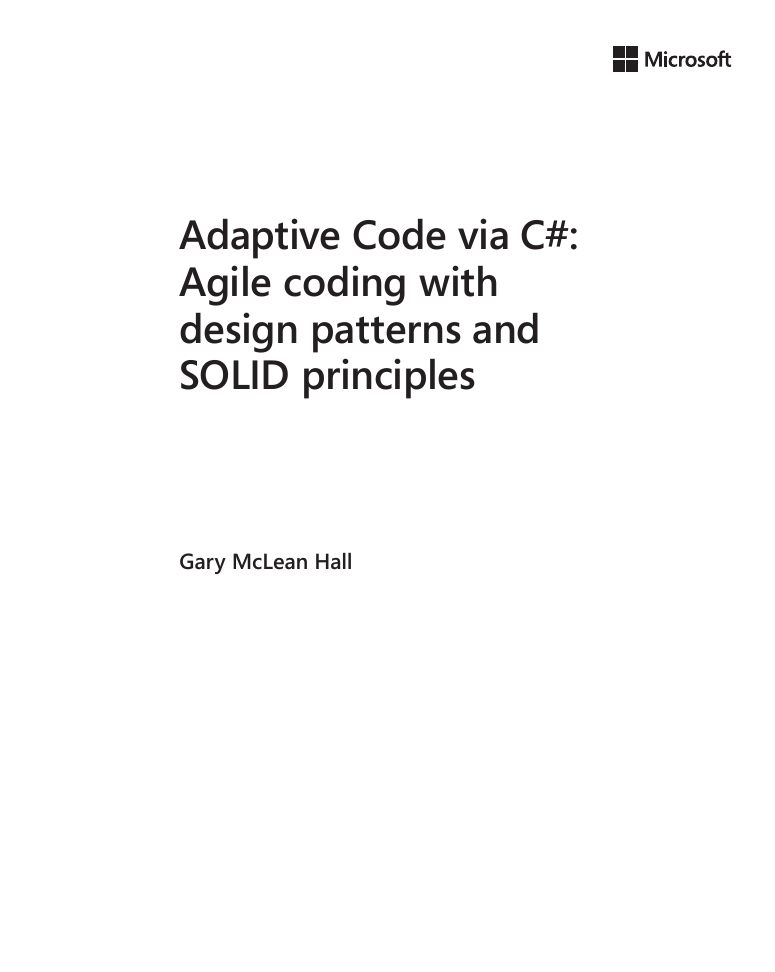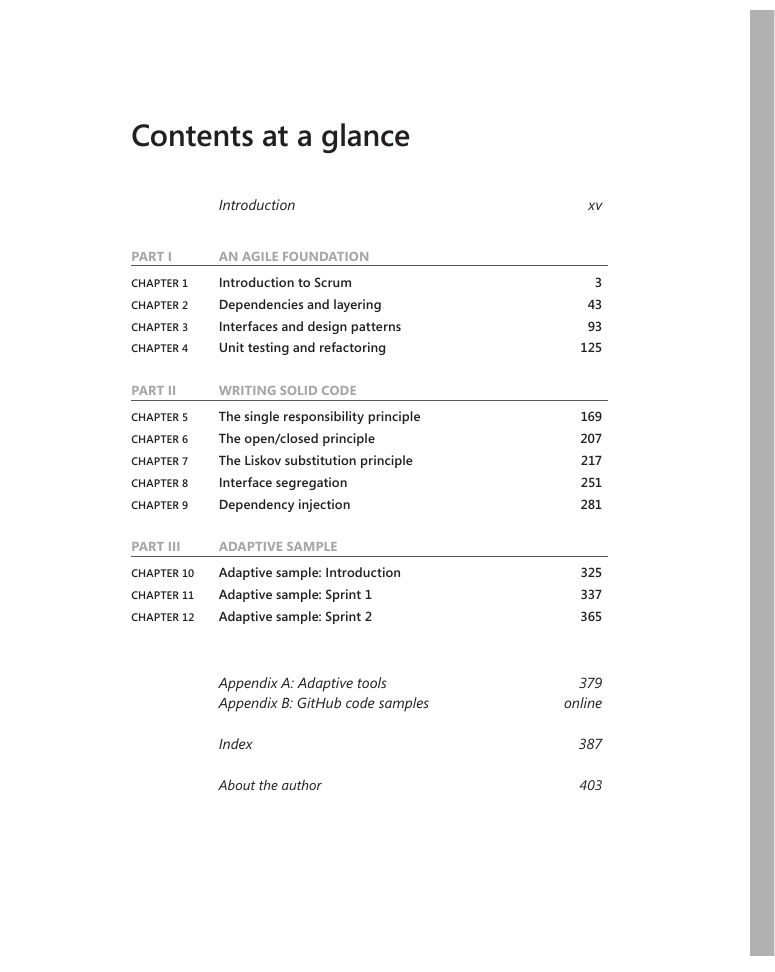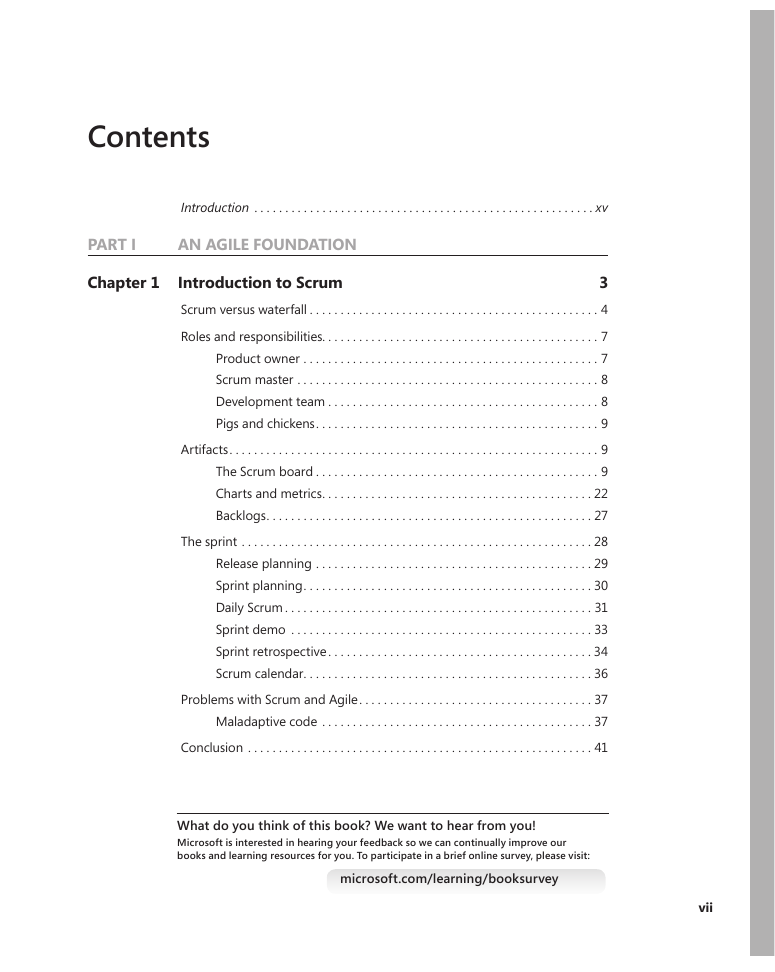Contents
Introduction
PART I: AN AGILE FOUNDATION
Chapter 1 Introduction to Scrum
Scrum versus waterfall
Roles and responsibilities
Artifacts
The sprint
Problems with Scrum and Agile
Conclusion
Chapter 2 Dependencies and layering
The definition of dependency
Managing dependencies
Layering
Conclusion
Chapter 3 Interfaces and design patterns
What is an interface?
Adaptive design patterns
Further versatility
Conclusion
Chapter 4 Unit testing and refactoring
Unit testing
Refactoring
Conclusion
PART II: WRITING SOLID CODE
Chapter 5 The single responsibility principle
Problem statement
SRP and the Decorator pattern
Using the Strategy pattern instead of switch
Conclusion
Chapter 6 The open/closed principle
Introduction to the open/closed principle
Extension points
Protected variation
Conclusion
Chapter 7 The Liskov substitution principle
Introduction to the Liskov substitution principle
Contracts
Covariance and contravariance
Conclusion
Chapter 8 Interface segregation
A segregation example
Client construction
Splitting interfaces
Conclusion
Chapter 9 Dependency injection
Humble beginnings
Beyond simple injection
Conclusion
PART III: ADAPTIVE SAMPLE
Chapter 10 Adaptive sample: Introduction
Trey Research
Initial backlog
Chapter 11 Adaptive sample: Sprint 1
Planning
“I want to create rooms for categorizing conversations.”
“I want to view a list of rooms that represent conversations.”
“I want to view the messages that have been sent to a room.“
“I want to send plain text messages to other room members.”
Sprint demo
Sprint retrospective
Chapter 12 Adaptive sample: Sprint 2
Planning
“I want to send markdown that will be correctly formatted.”
“I want to filter message content so that it is appropriate.”
“I want to serve hundreds of users concurrently.”
Sprint demo
Sprint retrospective
Appendix A: Adaptive Tools
Index
A
B
C
D
E
F
G
H
I
J
K
L
M
N
O
P
Q
R
S
T
U
V
W
X
About the author
Free ebooks
Tell us what you think!
















 2023年江西萍乡中考道德与法治真题及答案.doc
2023年江西萍乡中考道德与法治真题及答案.doc 2012年重庆南川中考生物真题及答案.doc
2012年重庆南川中考生物真题及答案.doc 2013年江西师范大学地理学综合及文艺理论基础考研真题.doc
2013年江西师范大学地理学综合及文艺理论基础考研真题.doc 2020年四川甘孜小升初语文真题及答案I卷.doc
2020年四川甘孜小升初语文真题及答案I卷.doc 2020年注册岩土工程师专业基础考试真题及答案.doc
2020年注册岩土工程师专业基础考试真题及答案.doc 2023-2024学年福建省厦门市九年级上学期数学月考试题及答案.doc
2023-2024学年福建省厦门市九年级上学期数学月考试题及答案.doc 2021-2022学年辽宁省沈阳市大东区九年级上学期语文期末试题及答案.doc
2021-2022学年辽宁省沈阳市大东区九年级上学期语文期末试题及答案.doc 2022-2023学年北京东城区初三第一学期物理期末试卷及答案.doc
2022-2023学年北京东城区初三第一学期物理期末试卷及答案.doc 2018上半年江西教师资格初中地理学科知识与教学能力真题及答案.doc
2018上半年江西教师资格初中地理学科知识与教学能力真题及答案.doc 2012年河北国家公务员申论考试真题及答案-省级.doc
2012年河北国家公务员申论考试真题及答案-省级.doc 2020-2021学年江苏省扬州市江都区邵樊片九年级上学期数学第一次质量检测试题及答案.doc
2020-2021学年江苏省扬州市江都区邵樊片九年级上学期数学第一次质量检测试题及答案.doc 2022下半年黑龙江教师资格证中学综合素质真题及答案.doc
2022下半年黑龙江教师资格证中学综合素质真题及答案.doc